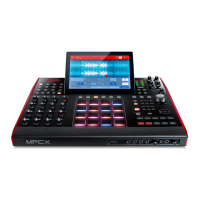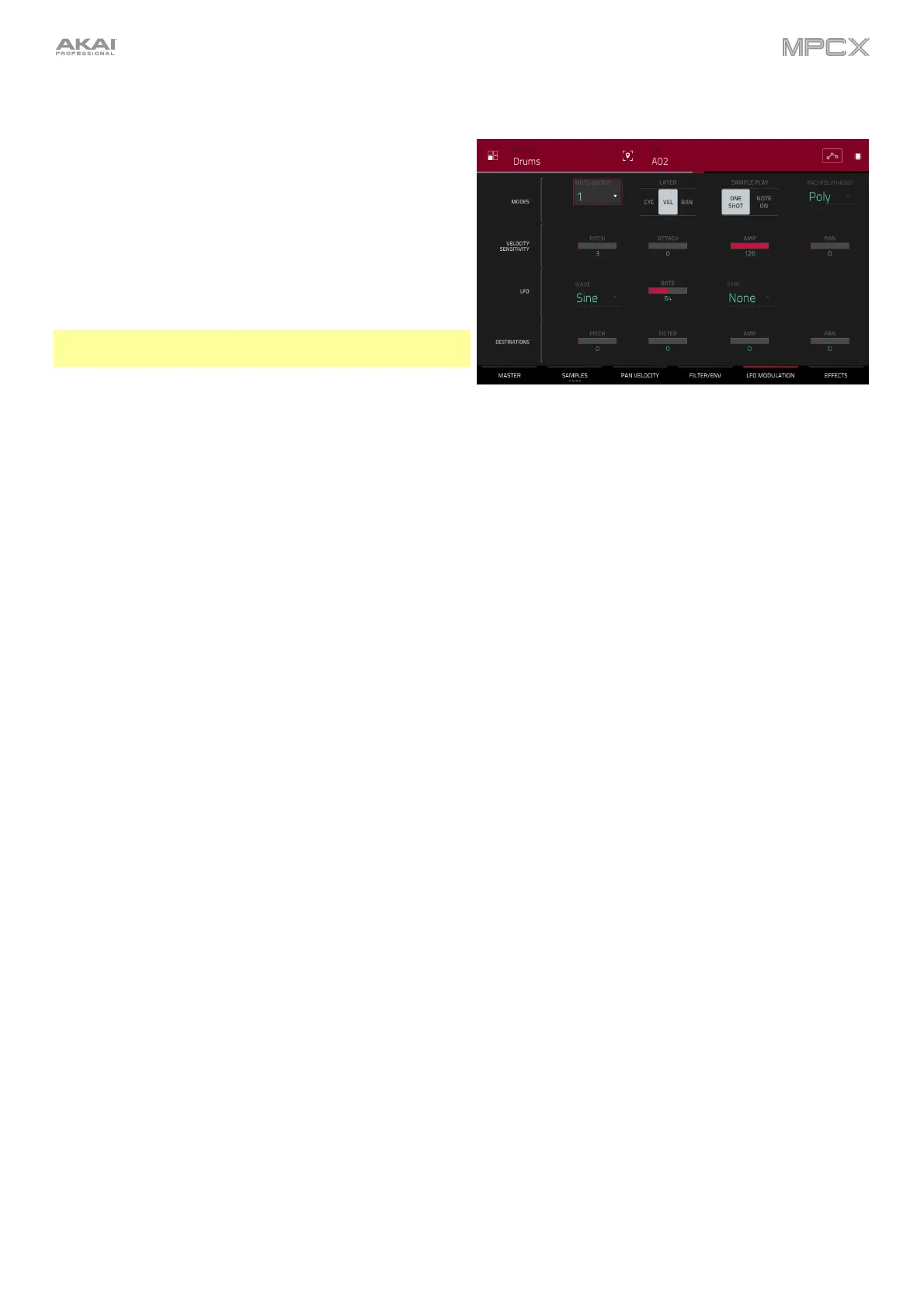154
LFO Modulation
The Modes controls let you set the behavior for each pad’s
samples in a drum program.
Use the Mute Group field to assign the selected pad to
one of the 32 available groups. When pads assigned to the
same mute group receive MIDI notes, the last pad played
will silence all other pads in that mute group. A mute group
affects pads within that program only; mute groups do not
affect pads in other programs.
Tip: This feature is useful for programming realistic hi-hats,
especially if only the open or closed hat should be heard.
Use the Layer Play selector to determine how multiple samples assigned to the same pad are played:
Cycle (Cyc): Each time the pad is played, it will play the next layer’s sample. In other words, the samples will
cycle through the layers as follows: 1, 2, 3, 4, 1, 2, 3, 4… etc.
Velocity (Vel): The pad will switch between layers depending on how hard you press a pad.
Random (Ran): Each time the pad is played, it will play one of its layer’s samples at random.
Use the Sample Play selector to determine how much of the sample is played.
One Shot: The entire sample will play from start to end. Use this when you want to play short sounds.
Note On: The sample will play only as long as the pad is held. This is better for longer samples so you can control
a sound’s duration by pressing and holding its corresponding pad.
Use the Pad Polyphony field to determine how the pad’s sound behaves when multiple hits are registered. When set
to Mono, only one pad will sound at a time. If a pad is played while another (or the same one) is still playing its
sample/samples, the new pad will immediately mute all other currently playing pads in that program. When set to
Poly, several pads can be triggered at the same time (limited only by the total number of voices available). You can
also select a specific number of pads (2–32) so that you can trigger up to this many pads at the same time (unless
they exceed the total number of voices available).
The Velocity Sensitivity controls determine how much the velocity affects the pitch of the sound (Pitch), the attack of
the filter envelope (Attack), the volume level of the filter envelope (Amp) and or the panning of the sound (Pan).
When you press a pad softly, only minimal modulation is applied. When you press it harder, the modulation amount
also gets stronger depending on the setting of the corresponding knob.
A low-frequency oscillator (LFO) generates a periodic waveform with an adjustable frequency and shape which can
be used for modulation purposes.
Use the Wave field to select the LFO waveform type:
Sine (best suited for smooth modulations)
Triangle (best suited for smooth modulations)
S&H (samples a random value and holds it until the next value is generated)
Saw (can generate interesting filter or volume changes)
Saw Down (can generate interesting filter or volume changes)
Square (interesting results with hard-panning modulations)
Noise (generates random values and glides)

